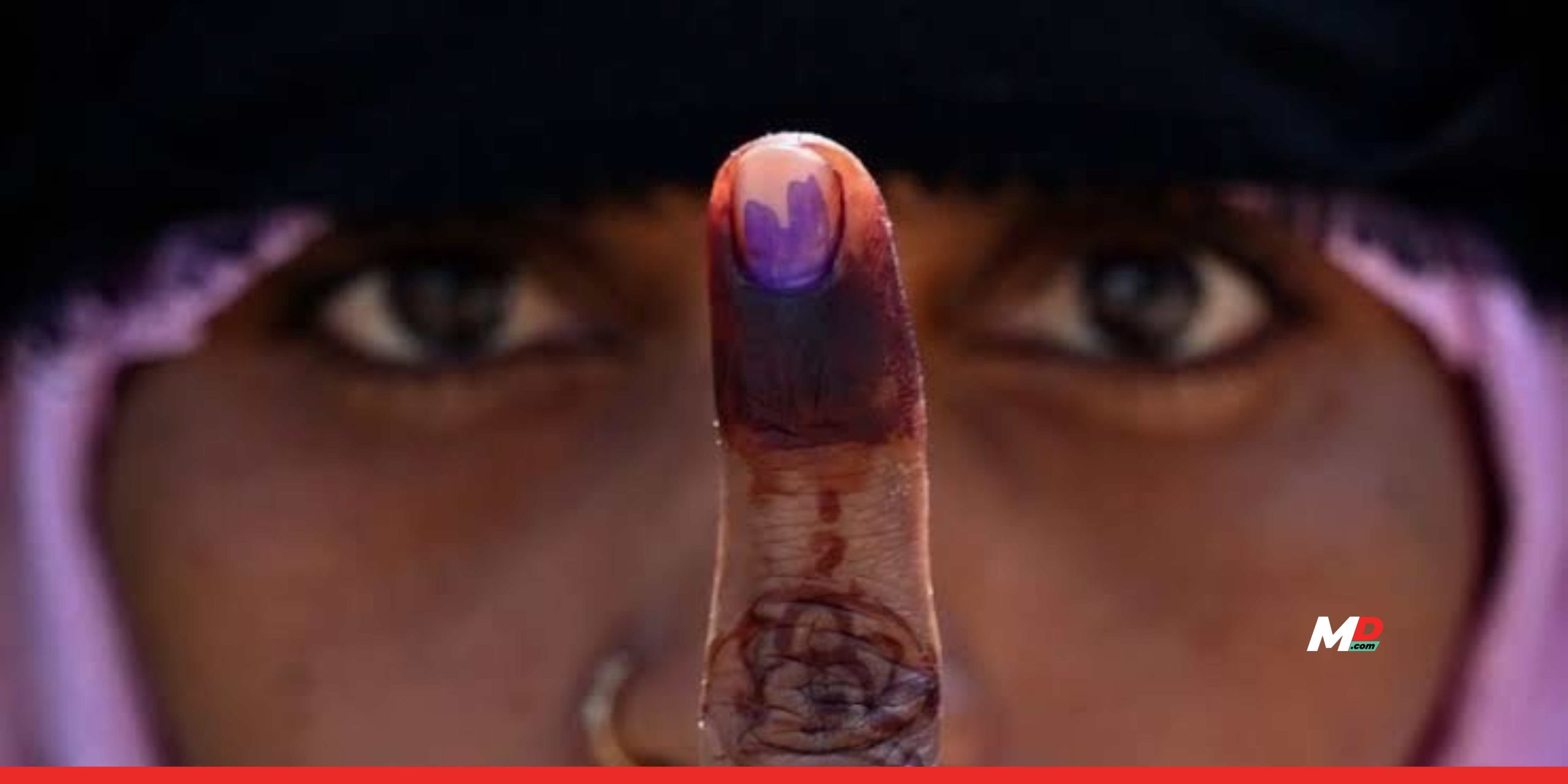Politics
India’s Lok Sabha Elections 2024: A surprising showdown and shifting tides
Published
2 years agoon

As the dust settles on India’s colossal 2024 Lok Sabha elections, the political landscape has undergone a seismic shift, defying the predictions of pundits and pollsters alike. The battle for the world’s largest democracy has been a rollercoaster ride, with unexpected twists and turns that have left the nation captivated. From the BJP’s strongholds crumbling to the resurgence of regional powerhouses, this election has truly been a testament to the dynamism and complexity of Indian politics.
Uttar Pradesh: A battleground of Titans
It was in Uttar Pradesh, often seen as the bellwether of India’s political tidings, that the biggest surprises were to be seen.
The Samajwadi Party, led by the charismatic Akhilesh Yadav, has emerged as the second-largest party in the INDIA alliance, winning 15 seats and leading in 23 more. The party’s ability to expand its base beyond its traditional Yadav and Muslim voter base, coupled with its savvy alliance-building, has been a game-changer. The chemistry between Yadav and Congress leader Rahul Gandhi has also proven to be a potent political formula.
The BJP’s Ayodhya heartbreak
The BJP had pinned its hopes on the construction of the Ayodhya Ram Mandir to give them an edge in the Lok Sabha polls. However, the party has suffered a major setback in Faizabad, the constituency under which the Ram Mandir falls, where the Samajwadi Party’s Awadhesh Prasad is leading. This unexpected result highlights the limits of the BJP’s Hindu nationalist agenda and the growing disillusionment among voters.
West Bengal: Trinamool holds the fort
In the eastern state of West Bengal, the All India Trinamool Congress (AITC), led by the formidable Mamata Banerjee, has once again emerged as the dominant force. Defying the BJP’s ambitious plans to make significant inroads in the state, the Trinamool is currently leading in 29 out of the 42 Lok Sabha seats. This performance is particularly impressive given the party’s recent challenges, including the Sandeshkhali incident and the school recruitment scam.
The BJP, which had made significant gains in West Bengal in the 2019 elections, winning 19 out of the 42 seats, appears to be struggling to repeat that performance. As of now, the party is leading in only 12 seats, a far cry from the predictions of a BJP sweep in the state. This setback for the saffron party highlights the resilience of Mamata Banerjee’s political machinery and the state’s voters’ rejection of the BJP’s divisive rhetoric.
Maharashtra: The Mahayuti’s downfall
In the western state of Maharashtra, the INDIA alliance, comprising the Congress, Shiv Sena (UBT), and Nationalist Congress Party (NCP), has delivered a crushing blow to the BJP-led Mahayuti coalition. The opposition alliance is currently leading in 27 out of the 48 Lok Sabha seats, a remarkable turnaround from the BJP’s dominance in the state in recent years.
Political analysts attribute the BJP’s downfall in Maharashtra to the party’s “politics of humiliation” towards its former allies, particularly the Shiv Sena. The BJP’s alleged orchestration of a split within the Shiv Sena has backfired, as voters have expressed their discontent with the party’s “jod tod” (stitching and unstitching) approach to alliances.
Odisha: The BJP’s saffron surge
While the INDIA alliance has made significant gains in several states, the BJP has emerged as the clear frontrunner in Odisha. The party is leading in 19 out of the 21 Lok Sabha seats in the state, a remarkable turnaround from its previous performance. This surge in the BJD’s stronghold is a testament to the party’s ability to forge strategic alliances and capitalize on the growing disenchantment with the ruling Biju Janata Dal (BJD) government.
The BJP’s impressive performance in Odisha can be attributed to its ability to forge alliances with regional players and tap into the state’s diverse electorate. The party’s strategy of aligning with Islamophobic elements within the Christian community has also paid dividends, as it seeks to make inroads into the state’s religious minorities.
Kerala: A consolation win for the BJP
The southern state of Kerala, long considered a bastion of the left-wing parties, has witnessed a surprising development, with the BJP’s Suresh Gopi leading in the Thrissur constituency, potentially becoming the party’s first-ever Lok Sabha parliamentarian from the state. This breakthrough is largely attributed to the BJP’s efforts to woo the state’s Christian community by presenting the state’s Muslims as a threat, a strategy that has gained traction in recent years.
The BJP’s success in Kerala can be partly attributed to the party’s amplification of the “love jihad” conspiracy theory, which suggests that Muslim men are deliberately marrying women from Hindu and Christian communities to convert them to Islam. While this theory has been widely debunked, it has resonated with certain segments of the Christian clergy, helping the BJP make inroads into the state’s religious minorities.
Karnataka: The BJP’s resilience
In the southern state of Karnataka, the BJP has managed to maintain its stronghold, leading in 16 out of the 28 Lok Sabha seats. While the Congress has made significant gains, leading in 10 constituencies, the BJP’s alliance with the regional Janata Dal (Secular) party has helped the party retain its influence in the state.
Political analysts attribute the BJP’s continued dominance in Karnataka to its stronghold in the coastal regions, particularly in the Mangaluru area. Despite the Congress’s gains, the BJP’s base in these regions has remained largely intact, underscoring the party’s ability to adapt and overcome challenges in its traditional strongholds.
Through it all, there were some key trends to watch out for.
The Exit Polls’ miscalculation
The 2024 Lok Sabha elections have proven to be a humbling experience for the pollsters and pundits who had confidently predicted a thumping victory for the BJP-led NDA. While the NDA is still poised to form the government, the INDIA alliance’s impressive performance has shattered the narrative of a one-sided contest.
The exit polls, which had predicted a landslide victory for the NDA, with the alliance projected to win between 370 and 401 seats, have been proven spectacularly wrong. This miscalculation highlights the dangers of overconfidence and the need for a more nuanced understanding of the complex dynamics that shape Indian elections.
The enduring strength of regional parties
One of the standout features of the 2024 Lok Sabha elections has been the resurgence of regional parties, which have played a pivotal role in the INDIA alliance’s performance. From the Trinamool Congress in West Bengal to the Samajwadi Party in Uttar Pradesh, these regional powerhouses have demonstrated their ability to mobilize their traditional voter bases and forge strategic alliances to counter the BJP’s national ambitions.
The rise of the INDIA bloc
The INDIA alliance, comprising a diverse array of regional and national parties, has emerged as a formidable force in the 2024 elections. By capitalizing on local issues and forging effective coalitions, the alliance has managed to challenge the BJP’s dominance in several states, setting the stage for a new era of coalition politics in India.
The changing tides of Indian politics
The 2024 Lok Sabha elections have undoubtedly been a watershed moment in Indian politics, with the landscape shifting in unexpected ways. From the BJP’s struggles in its traditional strongholds to the resurgence of regional parties, this election has shattered the notion of a one-party dominance and ushered in a new era of multi-polar politics.
The 2024 elections have underscored the importance of political adaptability and the willingness to embrace change. Parties that have been able to respond to the evolving needs and aspirations of the electorate have emerged stronger, while those clinging to outdated strategies have found themselves on the defensive.
As the nation eagerly awaits the final results, one thing is clear: the 2024 Lok Sabha elections have been a true test of India’s democratic resilience, with the future of the country’s political landscape hanging in the balance.
You may like
-


📈 Markets Open Strong : Voltas in Focus Amid Recovery Hopes
-


Couple attends own wedding virtually after being stranded by IndiGo
-


IndiGo-ing nowhere: Corporate greed and regulatory failure has grounded a nation
-


The Preliminary Findings of Air India AI171’s Tragic Crash Paint a Disturbing Picture
-


Japan’s Petabit Internet Is Faster Than You can Possibly Imagine
-


Cursed or Collectible? Labubu Dolls Likened to Ancient Demon


